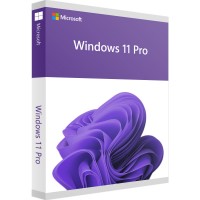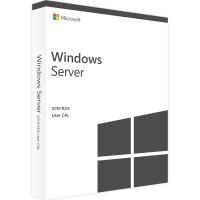 Windows 10 Pro
Windows 10 Pro  Microsoft Office 2019 Home and Business Windows
Microsoft Office 2019 Home and Business Windows 




 Windows 10 Home
Windows 10 Home  Windows 11 Pro
Windows 11 Pro  Microsoft Office 365 Single Win/Mac 5 devices
Microsoft Office 365 Single Win/Mac 5 devices 







 Microsoft Office 2019 Home and Student Windows
Microsoft Office 2019 Home and Student Windows 



 Microsoft Office 2019 Home and Student Mac
Microsoft Office 2019 Home and Student Mac 



 Microsoft Remote Desktop Services 2019 User
Microsoft Remote Desktop Services 2019 User  Microsoft Office 2019 Home and Business Mac
Microsoft Office 2019 Home and Business Mac 




 Windows Server 2019 User
Windows Server 2019 User  Windows 11 Home
Windows 11 Home  Microsoft Word 2010 Windows
Microsoft Word 2010 Windows Products from Microsoft

Microsoft - the company behind Windows and Office
Microsoft is omnipresent in our everyday lives. As a rule, this applies to our private lives just as much as it does to our jobs, school or university. Software solutions such as Windows 10, Microsoft Teams, Windows 11 or Microsoft Office or Microsoft 365 are standard. This is usually true even if the computers are equipped with foreign operating systems such as Mac OS, Android or iOS. This text introduces the manufacturer and its most important reasons. It shows why the Redmond (Washington state) based company has achieved such a special status.
The most important offers of the company at a glance
- Operating systems such as Windows 11 or Windows 10
- Application solutions such as Microsoft Office or Microsoft 365
- Collaboration tools such as Microsoft Teams
- Server solutions such as Windows Server, Sharepoint, SQL Server
- Development environments such as the .NET platform
- Entertainment software around the Xbox platform
- Services such as the Azure cloud computing platform
The history of Microsoft: a brief historical summary
The name Microsoft is short for Microcomputer Software. This name can be explained by the time of its foundation. in 1975, the company was founded by Bill Gates and Paul Allen. Computers often took up whole rooms at that time. The new company helped to finally shrink the computers with suitable software. In the early days, the company worked mainly for clients: MS-DOS, for example, first introduced in 1981, was a creation for IBM computers. But it also formed the basis for Windows, which worked with a graphical user interface.
In the 1980s, work began not only on this, but also on Microsoft Office solutions. In the 1990s, the company was able to conquer market leadership in these two core areas and expand into more and more areas. After the turn of the millennium, the focus shifted to the Internet. Services such as the Azure cloud platform were intended to bind companies closely to Microsoft. Microsoft 365, the subscription version of Microsoft Office, had a similar goal, but was also aimed at private users. A close connection between the individual products was intended to encourage companies to opt for more and more solutions from the company. One example is Microsoft Teams, which can handle all Microsoft Office files and thus significantly facilitates online collaboration via the corresponding apps.
The heart of the offer: the operating systems
Windows is almost synonymous with Microsoft - the company's operating system family is so well known. The first version was released in 1985: The company based it on the graphical user interface that Apple had introduced two years earlier with LISA (forerunner of Mac OS). However, the associated computer from the Californians was very expensive. Here, the competitor saw an advantage for itself: Through significantly cheaper hardware via devices from partners like IBM, the majority of users could opt for Windows 1. The calculation worked out - but not until Windows 3 was released in 1990. In 2009, Windows solutions had a market share of more than 95 percent.
by 2021, that's down to about 75 percent, to be sure. But Windows 10 and Windows 11 are still by far the dominant operating systems. This means that the vast majority of developers take them as a basis for their own work. Many programs and games are only available for devices that work with Windows, without exception. Users therefore specifically ask for them. The fact that the manufacturer now also offers hardware itself via the Surface product lines has intensified this trend.
Microsoft Office: originally a development for Apple
Computers with Windows 10 or Windows 11 are only considered complete when Microsoft Office is also installed. The associated apps Word, PowerPoint, Access, Outlook and Excel are in fact the standard solutions in their respective fields. Yet Office was not originally intended for such a prominent role. The first versions appeared in 1989, were developed for Apple and ran exclusively on the Macintosh. The first Windows version came out a year later - this was one of the reasons why Windows 3 was successful.
Microsoft Office continued to appear in parallel for both operating systems thereafter, but Windows became increasingly important in the process. The Mac variants were treated stepmotherly in the 2000s, which had legal consequences. The company was forced to treat Office completely the same for both operating systems. This was only fully implemented with Microsoft Office 2016, which was originally written for Windows 10.
Office is available as a purchase version as well as a subscription. The latter Microsoft Office version was first developed from scratch for Windows 11 and the current Mac OS versions and therefore runs particularly smoothly on current machines. The subscription version was called Office 365 until spring 2020, when the name was changed to Microsoft 365. The background to this was that the company flirted with the idea of including apps in the offering that no longer classically belong to Office. Microsoft Teams, for example, became a part of Microsoft 365, but is also found as a standalone solution in Windows 11.
The purchased versions are available in different packages. These can be aimed at private users, pupils and students, for example. However, they can also be intended for the self-employed or companies. Different numbers of apps are included in these packages. However, they can also be purchased individually if required.
The company's software works across devices
Microsoft Office and the company's other software solutions work across devices. Apps such as Word or Excel, for example, also exist for mobile devices. Moreover, they can also be used via browsers. Operating system limitations no longer play a role. In this way, the manufacturer has succeeded in becoming one of the most important providers in the field of mobile devices as well, even though it no longer offers its own smartphone OS after Windows Phone was discontinued, for example.
Conclusion: The Windows manufacturer offers what users need in unbeatable quality
At the beginning, the text made a promise to answer the question why the Windows manufacturer's solutions are omnipresent in our everyday life. The explanations show: The company has developed a special understanding of what users need. It provides these things in unbeatable quality. This is true across all areas.


